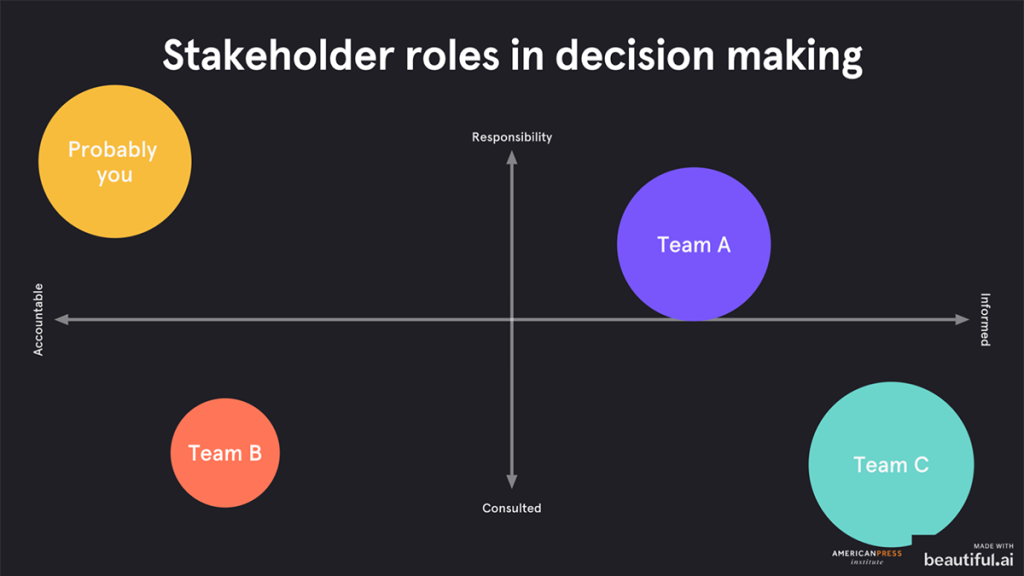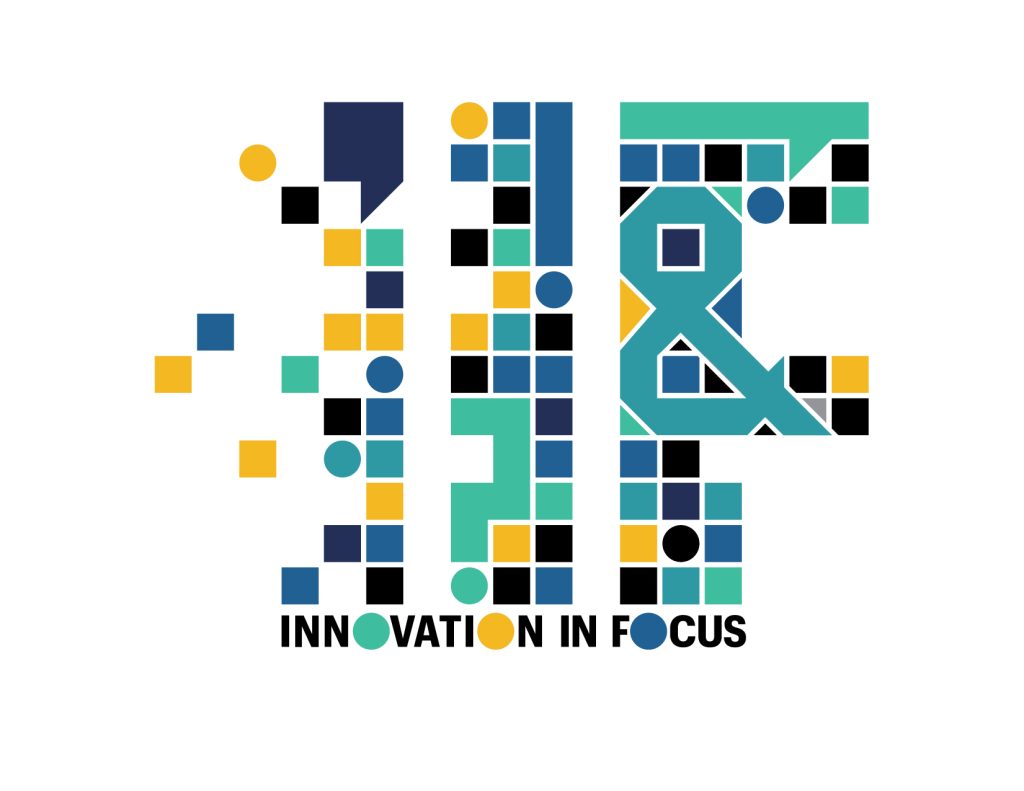
Product development is built on a foundation of trust
A conversation with Elite Truong, VP of Product Strategy
The vice president of product strategy at the American Press Institute and board secretary for the News Product Alliance, Elite Truong, has worked as a product manager at news organizations like Vox and led R&D and news product teams at The Washington Post.
Truong advocates for how journalists can incorporate product-thinking into their newsrooms no matter how many resources and staff members they have. She spoke with our Innovation in Focus team about what journalists should know before beginning to develop a news product, including tips for research, building relationships and practical frameworks that can help guide the entire process.

Lytle: What do you consider when preparing to build or work on a new product, especially if your news organization has limited resources or staff?
Truong: The very first thing to identify is: What is the right problem to solve? So, before you even get into product development, or you get into chatting with your project managers, [ask]: Is what you’re trying to solve the most important thing? Would it create the biggest impact if you were able to solve this gap in workflow, for instance? Does it introduce liabilities? I think trying to prioritize the problem worth solving is the first step.
When trying to validate that question, it’s a hard question to answer because everyone will disagree. Problems will affect either one person very deeply or maybe annoy a lot of people, and it’s hard to prioritize that. One thing to do is user research: Try to catch people in a pretty neutral environment, don’t meet with them, or ask them questions at the very end of their day, in a very busy work week. That will introduce a little bit of bias. Try not to ask them especially when they are struggling with that problem right now and they might overemphasize the need for that solution over another one that may be a little bit bigger.
Then, once you think you have identified a problem worth solving by building a tool or going with a vendor and licensing a tool, see if you could trial something. You can simply use paper prototypes, or over Zoom or Google Meet, you could have a couple of jamboards or whiteboards or docks that explain a user experience and just try to understand how you can better improve if you’re building something from scratch.
The reason to build anything, the reason to pay for any tools or invest time even trying to test tools, is that that solution will be used. It’s a number one reason to do any of these things: to be useful and relevant, and solve a problem worth solving in a newsroom.
Lytle: How do you define news products?
Truong: My definition is anything that is a designed means to an end within your organization. It might be a structure or a process that has a goal. Your story itself is a product, right? Someone should hopefully own that, whether it’s in your company or at the CMS tool that you build, that’s a product. It’s something that has a goal at the end that you can measure in some way. That means that processes, the way that we talk to each other, the culture that we build – that all is a product as well. Products can be monetized. Products can be evangelized. They can be marketed. They can work for people or not; they can be useful or not. And in the ideal world, products are helpful to people and help people think about how to more thoughtfully work together.
Lytle: How do you navigate conversations within the news organization when people disagree on priorities?
Truong: One thing that I’d encourage folks to remember is that you have your sphere of control, right? What you can control is really deeply understanding the products that you work on. And being able to describe them very quickly to an executive or to other stakeholders, like, “Hey, here’s the problem that we see right now that we think is worth solving, to my knowledge. I think this is worth doing now, or I think this is worth doing in Q3 or right before this large thing that we want to launch because it’s going to need something like that. You let me know if that sounds right to you, and here’s what I would need to get that done.”
So, 1) have an ally and someone to sort of fend off the noise because that can distract from a lot at work. And then 2) try to put concrete decisions in front of your stakeholders, so it doesn’t get blocked longer than necessary. Something that they can say “yes” or “no” to. You’re allowed to have an opinion, such as “This is my skill set, this is what I can bring to your newsroom, here’s what I can do without any support right now. Does that sound good to you?”
Lytle: What comes to mind when you think about getting buy-in from the newsroom, and what advice do you have related to that part of the process?
Truong: It’s another cultural thing altogether: how do you gain trust from people? Even your coworkers, who don’t do the exact same thing as you, how do you gain trust? You start however you can. Introducing yourself, seeing if you can buy someone coffee and just hang out with them and hear what their job is like. And then suggesting a couple of places where you can overlap, for instance. Putting in a lot of face time so the first interaction that you have with someone who will be your stakeholder in the future isn’t asking a ton of time from them.
There’s this popsicle place around the corner from the Post, for instance, I took a lot of people out there and just took like 20 minutes of their time asking them what they wanted to do. What they couldn’t do. I asked about their problems. I asked about conversations they had with my old boss to see what I could carry forward. Just collecting information and then ending with: Can I come to a team meeting of yours sometimes, and can I just listen and take down things that your team is saying? Even just doing that once, that team is more likely to want to hear from you again or maybe want to hear what things are going on and you’re working on.
Lytle: What tools, frameworks or specific strategies help in that preparation work before you start a project?
Truong: When you’re looking at the people who should be involved, there’s something called the RACI matrix. It stands for responsible, accountable, consulted and informed. This is a matrix where you can understand your stakeholders for any given project or product.
This serves two purposes. One, so you can understand how to be as inclusive as possible, while still setting a boundary: These are the people who are going to be working on the tool. These are the people who I need to do user testing with and it would be irresponsible of me as a product owner if I didn’t do that because they can tell me the most about this problem. Here are the people I need to let know about updates and anything that’s going on that I might need their help on. And here are people who I just need to broadcast, in general, “hey, here’s this prototype, feel free to take a look at it. Give me questions, your thoughts and things like that.”
The other side of it is assigning responsibility to those people. Putting that in front of them will help them understand that it’s more valuable for you to spend 20 minutes with someone on their team so you can understand that firsthand. It kind of cuts down on the number of people who want to be in every single step of what you’re doing.
Lytle: Do you have any other tips or advice related to starting work on a new product?
Truong: A really good place to start is with some data, something measurable, right? It could even be industry wide that you point to, and you can connect it to anecdotal stuff. I think that’s why folks with a little bit of audience experience do so well in product roles because they know how to set a goal that has something measurable as an outcome. So you can see how you can improve over time. Even if you have the smallest number that you can attach to it to validate how big of a priority it is, it can help quite a bit with prioritization.
Editor’s Note: This interview has been edited for clarity and brevity.

Sign up for the Innovation in Focus Newsletter to get our articles, tips, guides and more in your inbox each month!

Comments